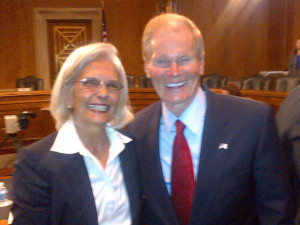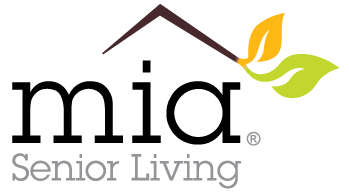On February 12th I was invited to testify to the US Senate Aging and Entrepreneurship committees to provide information about the challenges that “late-in-life” entrepreneurs like myself face in starting their businesses. The purpose was for the Committees to gather recommendations on how to facilitate these initiatives. At the meeting were senior senators and chair of committees, Senators Bill Nelson, Susan Collins and Tim Scott. There was consensus among those providing testimony that older entrepreneurs constitute the largest group of small business owners today and is growing. Today over 9 million seniors are establishing businesses with 30 million more coming over the next decade. It is a matter of great interest to the Senate and a matter they want to prepare for and facilitate. These businesses are also the largest source of new jobs to young employees.
A main challenge that these older entrepreneurs encounter is access to capital to start and remain in business. Access to government, federal agencies and investors is also a barrier. Discrimination toward seniors is real and alive. Accessing capital from lenders always raises the question of how long the business will be operating given the age of the owner. Succession planning then becomes more necessary than ever. The myth that older individuals cannot learn new skills or new technology; that they take rather than give was shattered with the testimony and research presented at the hearing.
The Senators asked for ideas of what would make life easier including introducing legislation. Several workable ideas were submitted that include allowing the use of unemployment benefits for startups, new regulations to make it easier to obtain a Small Business loan, coordination at the federal level so entrepreneurs can communicate with federal agencies, and more.
The hearing was the first to address this issue We believe that it provided clear understanding of the role that older entrepreneurs are playing today and in the future and the obstacles that they face that could be facilitated by the Senators. More on this.
Conchy Bretos and Senator Bill Nelson after the hearing:
Conchy Bretos’ testimony to the committee:

For the past seventeen years our firm has worked with public and private entities in 23 states. Later this spring we will be opening and managing an affordable assisted living facility for the District of Columbia Housing Authority. Our projects have proven to reduce Medicaid and Medicare spending by keeping our residents healthy, away from costly institutions, while generating thousands of new jobs and healthy operating margins. For the past two years we have partnered with low income housing tax credit developers, owners of affordable housing and private owners/investors to scale our model. This has required a major restructuring of our firm and our business model. In 1995 I created Mia Senior Living Solutions as a for profit company understanding that if our firm was to grow rapidly it had to be fueled by profits. As Florida Secretary for Aging under the Lawton Chiles governorship, I got a good understanding of aging issues and developed a strong relationship with the aging network. I had lived long enough to learn from failures, how to deal with detours and the inevitable ups and downs. Changing the way we care for low income seniors and disabled adults was not a new idea but no one had created a successful model to do it. We created a model within an exponentially growing market with little competition. Starting my own business was as much due to life circumstances as it was a career change. An empty nest, the end of a marriage, the loss of a job, I reached midlife with an urgency to leave a legacy, to contribute, to make money and live to the fullest those bonus years that longevity gives us. Wanting to leave an impact on the world grows stronger as we age. I asked myself if not now, when? If not me, who? For a long time I had dreamed of creating something lasting that would connect me with future generations. I did not want to defer this dream any longer. Not having health insurance kept me awake at night. I took some time to reflect and assess what I wanted to do, what skills I possessed and then tested the idea in the real world. When my term ended as Florida Secretary for Aging, I came home to Miami with some savings from my job and an idea; to convert a public housing building into assisted living and allow for true aging in place. The Miami-Dade Housing Agency Director wanted to dispose of the highly deteriorated Helen Sawyer building in downtown Miami. I told him I had an idea I wanted to test in the building. He said yes but he had two requirements: One was that I had to prove my idea quickly and two, I had to find the funds to do it. That day I formed my company, invested some money in stationery and worked on a feasibility report with the help of some friends. At the same time I approached the State Legislature and was able to get a $1.2 million allocation of Medicaid waivers. I was awarded a five year contract by the Board of County Commissioners to start the conversion of Helen Sawyer Plaza with a promise that it would be self-sustainable by the end of the first year. We developed detailed budgets, worked on the policies and procedures needed, hired the staff needed, secured vendors. I worked very hard until what seemed like the impossible, happened. We opened the doors of Helen Sawyer and in six months the place was full with a good waiting list. I knew that this first project had to be successful if we were to move forward. This innovative project was featured several times in the media, won four national awards and became the model for the nation. It became a show place with constant visitors from the entire nation, senators, governors, secretaries and a multitude of housing directors who wanted to have one just like the one I had created. I was able to negotiate new contracts with housing authorities as far away as West Virginia. I was invited to speak at several industry conferences and build a community and a larger network. Although we did a lot of free work in the beginning, we moved away from the pro-bono and created a successful business. It was hard to keep up with demand with only myself so in 2001 I asked my daughter, a management consultant in New York, to join the firm. To my amazement she accepted. Mother/daughter teams weave together business and family life, school schedules, time with the grandchildren. All are important parts of the day-to-day routine. Succession planning is a prominent topic of discussion. Although letting go is not an easy process for me. Receiving the first Purpose Prize award in 2006 and becoming an Ashoka Fellow in 2010 have certainly been turning points in our business life. These awards have provided validation for what we do and a network of professionals that are interested in our scaling our business. We have received expert and legal advice, mentoring and support. We have learned how to present ourselves, how to raise money, structure ventures, re-engineer our firm. I know now more about databases, LinkedIn, Facebook, electronic health records and blogging than I ever wanted. I do not have one boss anymore but many of them, our advisors, board members, funders, clients and investors. However, most of my fellow entrepreneurs are not so lucky. Lack of capital, connections and mentoring remain major obstacles for us aging entrepreneurs. Relying on grants to sustain your work has become an impossible proposition. In order to survive, the initiative must generate its own source of revenues by selling products produced by the company and that can be replicated over and over again. Most of our work involves partnering with government to change policies that represent obstacles. Today, more than ever, government needs individuals like us with the public interest in mind, talented and driven. Approaching government usually ends in rejection at least that was my case. Two years ago we made a major decision to team up with private entities to better grow our business. But this too has its own challenges like the distrust by investors of the reliability of government subsidies like the Medicaid waiver or the disconnection between the regulations of the Low Income Tax Credit program and assisted living. For these investors financial rewards come first and social impact is gravy. Maintaining that balance has been a major challenge for us. But we know consumers are demanding more socially responsible behavior from businesses. Businesses need to catch up with this trend. Profits are not everything. America is a young country; our models do not include old people. The most common image of an innovator is that of a youth creating a great idea in a garage, a dormitory, or a makeshift office. In reality these are the exceptions. Research tells us that it usually takes 20 years for the birth of an idea to become fully implemented. It is around the age of 40 or 50 years that individuals are at the peak of their work. It has been proven that a 55 year old and even a 65 year old have significantly more innovation potential than a 25 year old. It is fair to say that less gray hair sharply reduces the innovation potential in an organization. Yet, stereotypes like old people cannot learn new skills, master new technology, that they take rather than give abound. Shattering these stereotypes must be a major priority for all. This hearing goes a long way to doing that.

